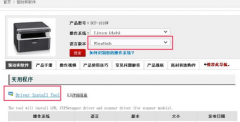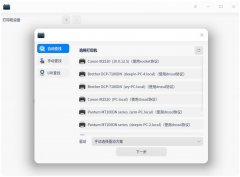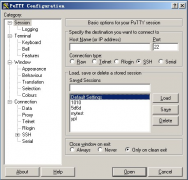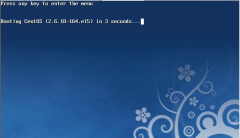Linux如何使用setfacl命令创建权限文件
setfacl是Linux下设置文件访问控制列表的命令,可用来创建文件,能够继承目录的权限,有些功能类似于chmod命令,下面小编就给大家介绍下Linux使用setfacl命令创建权限文件的方法,一起来学习下吧。

下面以 root 用普通用户 user1 。在目录/mnt下
[root@RedHat-7 mnt]# setfacl -m u:user1:rwx share //为目录添加ower = user1 ,并赋予rwx 的权根。
[root@redhat-7 mnt]# setfacl -d -m u:user1:rwx share //为目录添加默认的acl权限,此目录下创建目录和文件都会继承此权限信息
[root@redhat-7 mnt]#
[root@redhat-7 mnt]#
[root@redhat-7 mnt]# getfacl share //查看share的facl信息
# file: share
# owner: root
# group: root
user::rwx
user:user1:rwx // 此时user1才能对share有写权限
group::r-x
mask::rwx
other::r-x
default:user::rwx //默认子目录或文件的权限信息
default:user:user1:rwx
default:group::r-x
default:mask::rwx
default:other::r-x
[root@redhat-7 mnt]# cd share/
[root@redhat-7 share]# ls
[root@redhat-7 share]# touch roota
[root@redhat-7 share]# touch rootb
[root@redhat-7 share]# mkdir rootdir1
[root@redhat-7 share]# mkdir rootdir2
[root@redhat-7 share]# ls
roota rootb rootdir1 rootdir2
[root@redhat-7 share]# getfacl roota
# file: roota
# owner: root
# group: root
user::rw-
user:user1:rwx #effective:rw-
group::r-x #effective:r--
mask::rw-
other::r--
[root@redhat-7 share]# getfacl rootdira
getfacl: rootdira: No such file or directory
[root@redhat-7 share]# getfacl rootdir
rootdir1/ rootdir2/
[root@redhat-7 share]# getfacl rootdir1
# file: rootdir1
# owner: root
# group: root
user::rwx
user:user1:rwx
group::r-x
mask::rwx
other::r-x
default:user::rwx
default:user:user1:rwx
default:group::r-x
default:mask::rwx
default:other::r-x
[root@redhat-7 share]#
现在用user1 进入此目录来检测权限:
[user1@redhat-7 share]$
[user1@redhat-7 share]$
[user1@redhat-7 share]$
[user1@redhat-7 share]$ ll
total 8
-rw-rw-r--+ 1 root root 0 Nov 19 22:52 roota
-rw-rw-r--+ 1 root root 0 Nov 19 22:52 rootb
drwxrwxr-x+ 2 root root 6 Nov 19 22:52 rootdir1
drwxrwxr-x+ 2 root root 6 Nov 19 22:52 rootdir2
[user1@redhat-7 share]$ touch user1a
[user1@redhat-7 share]$ touch user1dir1
[user1@redhat-7 share]$ getfacl user1a //查看新文件的权限
# file: user1a
# owner: user1
# group: user1
user::rw-
user:user1:rwx #effective:rw-
group::r-x #effective:r--
mask::rw-
other::r--
[user1@redhat-7 share]$ rm roota //尝试删除root创建的文件,成功
[user1@redhat-7 share]$ rm rootdir1 //尝试删除root创建的目录,成功
rm: cannot remove arootdir1a: Is a directory
[user1@redhat-7 share]$ rm rootdir1 -r
[user1@redhat-7 share]$ ll
total 4
-rw-rw-r--+ 1 root root 0 Nov 19 22:52 rootb
drwxrwxr-x+ 2 root root 6 Nov 19 22:52 rootdir2
-rw-rw-r--+ 1 user1 user1 0 Nov 19 22:57 user1a
-rw-rw-r--+ 1 user1 user1 0 Nov 19 22:57 user1dir1
[user1@redhat-7 share]$
所以,当有需求要做权根的继承操作时,可以使用这个方来实现。
在新的rhel7 中, 会有新的工具chacl 类似于 setfacl 。
上面就是Linux使用setfacl命令创建权限文件的方法介绍了,因为创建的文件继承了父目录的权限,所以在某些时候使用比较方便,当然setfacl命令还有其他的用法。
{else}setfacl是Linux下设置文件访问控制列表的命令,可用来创建文件,能够继承目录的权限,有些功能类似于chmod命令,下面小编就给大家介绍下Linux使用setfacl命令创建权限文件的方法,一起来学习下吧。

下面以 root 用普通用户 user1 。在目录/mnt下
[root@RedHat-7 mnt]# setfacl -m u:user1:rwx share //为目录添加ower = user1 ,并赋予rwx 的权根。
[root@redhat-7 mnt]# setfacl -d -m u:user1:rwx share //为目录添加默认的acl权限,此目录下创建目录和文件都会继承此权限信息
[root@redhat-7 mnt]#
[root@redhat-7 mnt]#
[root@redhat-7 mnt]# getfacl share //查看share的facl信息
# file: share
# owner: root
# group: root
user::rwx
user:user1:rwx // 此时user1才能对share有写权限
group::r-x
mask::rwx
other::r-x
default:user::rwx //默认子目录或文件的权限信息
default:user:user1:rwx
default:group::r-x
default:mask::rwx
default:other::r-x
[root@redhat-7 mnt]# cd share/
[root@redhat-7 share]# ls
[root@redhat-7 share]# touch roota
[root@redhat-7 share]# touch rootb
[root@redhat-7 share]# mkdir rootdir1
[root@redhat-7 share]# mkdir rootdir2
[root@redhat-7 share]# ls
roota rootb rootdir1 rootdir2
[root@redhat-7 share]# getfacl roota
# file: roota
# owner: root
# group: root
user::rw-
user:user1:rwx #effective:rw-
group::r-x #effective:r--
mask::rw-
other::r--
[root@redhat-7 share]# getfacl rootdira
getfacl: rootdira: No such file or directory
[root@redhat-7 share]# getfacl rootdir
rootdir1/ rootdir2/
[root@redhat-7 share]# getfacl rootdir1
# file: rootdir1
# owner: root
# group: root
user::rwx
user:user1:rwx
group::r-x
mask::rwx
other::r-x
default:user::rwx
default:user:user1:rwx
default:group::r-x
default:mask::rwx
default:other::r-x
[root@redhat-7 share]#
现在用user1 进入此目录来检测权限:
[user1@redhat-7 share]$
[user1@redhat-7 share]$
[user1@redhat-7 share]$
[user1@redhat-7 share]$ ll
total 8
-rw-rw-r--+ 1 root root 0 Nov 19 22:52 roota
-rw-rw-r--+ 1 root root 0 Nov 19 22:52 rootb
drwxrwxr-x+ 2 root root 6 Nov 19 22:52 rootdir1
drwxrwxr-x+ 2 root root 6 Nov 19 22:52 rootdir2
[user1@redhat-7 share]$ touch user1a
[user1@redhat-7 share]$ touch user1dir1
[user1@redhat-7 share]$ getfacl user1a //查看新文件的权限
# file: user1a
# owner: user1
# group: user1
user::rw-
user:user1:rwx #effective:rw-
group::r-x #effective:r--
mask::rw-
other::r--
[user1@redhat-7 share]$ rm roota //尝试删除root创建的文件,成功
[user1@redhat-7 share]$ rm rootdir1 //尝试删除root创建的目录,成功
rm: cannot remove arootdir1a: Is a directory
[user1@redhat-7 share]$ rm rootdir1 -r
[user1@redhat-7 share]$ ll
total 4
-rw-rw-r--+ 1 root root 0 Nov 19 22:52 rootb
drwxrwxr-x+ 2 root root 6 Nov 19 22:52 rootdir2
-rw-rw-r--+ 1 user1 user1 0 Nov 19 22:57 user1a
-rw-rw-r--+ 1 user1 user1 0 Nov 19 22:57 user1dir1
[user1@redhat-7 share]$
所以,当有需求要做权根的继承操作时,可以使用这个方来实现。
在新的rhel7 中, 会有新的工具chacl 类似于 setfacl 。
上面就是Linux使用setfacl命令创建权限文件的方法介绍了,因为创建的文件继承了父目录的权限,所以在某些时候使用比较方便,当然setfacl命令还有其他的用法。
显示全部















